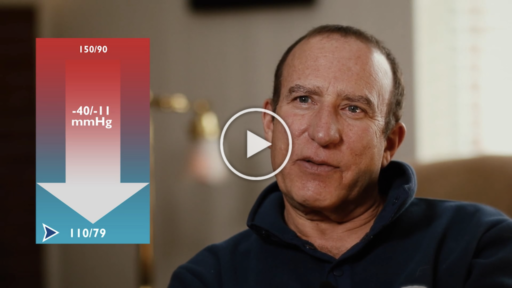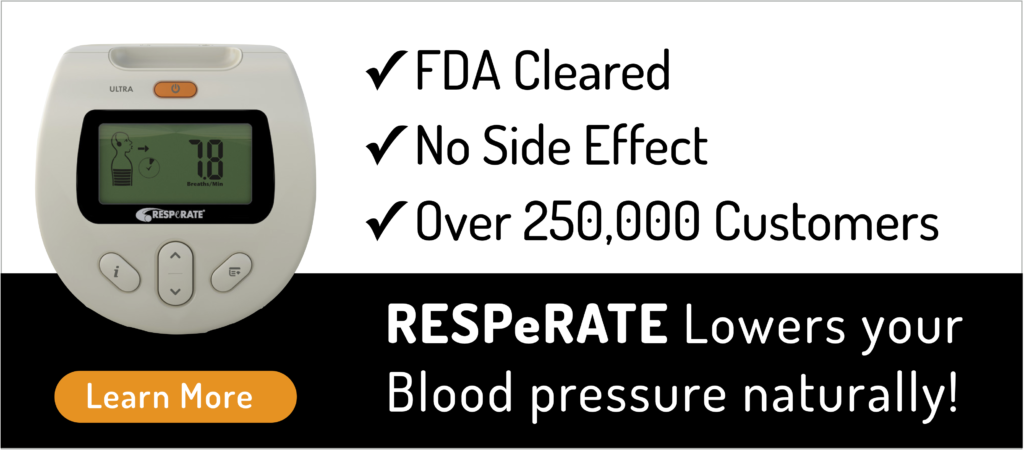Have you ever felt nervous at the doctor’s office, like George and Clara, only to discover that your blood pressure reading is higher than usual? You’re not alone. Many people experience elevated blood pressure in a clinical setting, a phenomenon known as “white coat hypertension.”
But how can you determine if your high reading is just a response to the doctor’s office or a sign of a more serious issue? Understanding the difference between white coat hypertension and genuine high blood pressure is crucial for proper diagnosis and treatment.
George, a 54-year-old general contractor, has been under a great deal of stress. With building contracts taking longer to do George is losing money. At his doctor’s appointment, his blood pressure was 140/86 at the nurse’s station.
When the doctor checked his blood pressure it spiked to 160/94. George was afraid the doctor will find something wrong with him during his exam. George was stressed when he arrived. His doctor has recommended that George start on a hypertension medication.
Clara has always the nervous type. She has recently moved to a new town and needs to find a new physician. At 27 she has always been afraid of doctors ever since an extensive illness as a child.
Every time she sees a physician her blood pressure spikes. The nurse checking Clara in recorded a blood pressure of 130/84. When the doctor took her blood pressure Clara’s blood pressure was 154/90. At home that morning it was 117/75. Her doctor wants to start her on a hypertension medication.
Visiting Your Doctor’s Office
Across the nation, this scenario plays out thousands of times every day.
Doctors routinely record blood pressure levels that are significantly higher than levels recorded by nurses, the first thorough analysis of scientific data has revealed.
A systematic review has discovered that recordings taken by doctors are significantly higher than when the same patients are tested by nurses.
A systematic review led by the University of Exeter Medical School, and supported by the National Institute for Health Research Collaboration for Leadership in Applied Health Research and Care in the South West Peninsula (NIHR PenCLAHRC), has discovered that recordings taken by doctors are significantly higher (by 7/4mmHg) than when the same patients are tested by nurses.
Dr. Christopher Clark, of the University of Exeter Medical School, said the findings, published in the British Journal of General Practice, should lead to changes in clinical practice.
“Doctors should continue to measure blood pressure as part of the assessment of an ill patient or a routine check-up, but not where clinical decisions on blood pressure treatment depend on the outcome.
The difference we noted is enough to tip some patients over the threshold for treatment for high blood pressure, and unnecessary medication can lead to unwanted side-effects.
Some patients may be erroneously asked to continue to monitor their own blood pressure at home, which can build anxiety. These inappropriate measures could all be avoided by the simple measure of someone other than a doctor taking the blood pressure recording.”
The phenomenon of doctors recording higher blood pressure is known as the “White Coat Hypertension,” and is thought to result from the patient’s physical response to being assessed by a doctor.
It has previously been noted in a number of studies, but Dr. Clark’s research is the first comprehensive analysis of available data to quantify this effect.
The team examined the blood pressure levels of 1,019 individuals whose measurements had been taken by both doctors and nurses at the same visit. Dr. Clark said: “Our results were pooled from different settings across ten countries, so we can be confident that they can be generalized to any healthcare environment where blood pressure is being measured.
What Is White Coat Hypertension?
The 2005 American Heart Association guidelines for the measurement of blood pressure in humans defined white coat hypertension (WCHT) as persistently elevated blood pressure (BP) ‘in the presence of a healthcare worker, particularly a physician’ (≥ 140/90 mmHg) in patients not taking medication, with an average awake ambulatory blood pressure monitoring (ABPM) < 135/85 mmHg.
In 2007, the European Society of Hypertension and European Society of Cardiology published guidelines for the management of hypertension and recommended WCHT should be diagnosed when office BP ≥ 140/90 on at least three occasions, with normal 24 h (< 125– 130/80 mmHg) and day ABPM (< 130–135/85 mmHg) or homeBP (average of several readings < 130–135/85 mmHg).
Office blood pressures recorded by medical practitioners give higher readings on average compared with readings obtained by nurses or non-medical trained health professionals.
Arlene has just had her blood pressure checked, “But it was fine when I took it at home,” is what office nurses often hear as they unwrap the blood pressure cuff from a patient’s arm. White coat hypertension is no myth, says Mary Bauman, a physician on staff with Intergris Family Care Central in Oklahoma City.
“If you run up the stairs to the doctor’s office, if you’re in traffic and you’re trying to get there, your blood pressure may be elevated,” Bauman says. “Everybody’s blood pressure goes up at certain times. It’s supposed to.”
Do You Really Have High Blood Pressure?
In both scenarios at the beginning of our article, both patients where prescribed hypertension medicine after a single reading. Seem farfetched? It isn’t. It happens every day.
If you have been prescribed a blood pressure medication based on a single high number at your doctor’s office, you may want to ask if you really need it. That blood pressure reading might be misleading, according to an influential panel of government experts.
In its draft recommendation, the U.S. Preventive Services Task Force has concluded that a hypertension diagnosis made at a clinic or doctor’s office should be verified by a series of readings taken as you go about your day. Here’s why ambulatory monitoring – done away from a medical setting – gives a truer picture of your blood pressure.
The Benefits of Home Blood Pressure Monitoring
“When you have your blood pressure checked in the doctor’s office, you’re in an artificial environment that is not reflective of the vast majority of the time when your blood pressure is going through its daily excursions,” says cardiologist Dr. Elliott Antman, professor of medicine at Harvard Medical School.
Throughout the course of a day, the average person’s systolic blood pressure (the first number in the reading) may fluctuate considerably.
Some people get very anxious in medical settings, which can cause their blood pressure to rise—a phenomenon known as white-coat hypertension. Others may feel like they’re in a protected, safe place where they can sit back and relax, which may cause their blood pressure to be lower than normal.
If their blood pressure is high at other times, however, they may have a condition called masked hypertension.
The U.S. Preventive Services Task Force, a federally sponsored group that draws up medical guidelines, recommends that people measure their blood pressure outside of the medical setting to confirm a diagnosis of high blood pressure before starting treatment.
It has been found that home blood pressure monitoring readings are often lower than readings taken in the office and closer to the average blood pressure recorded during 24-hour ambulatory blood pressure monitoring. Home blood pressure monitoring allows increased numbers of readings, achieves more reproducible readings than office readings
What Is Ambulatory Blood Pressure Monitoring?
Ambulatory Blood Pressure Monitoring (ABPM) is when your blood pressure is being measured as you move around, living your normal daily life. It is normally carried over 24 hours.
It uses a small digital blood pressure machine that is attached to a belt around your body and which is connected to a cuff around your upper arm. It small enough that you can go about your normal daily life and even sleep with it on.
By measuring your blood pressure at regular intervals over 24 hours, your doctor is able to get clear pictures of how your blood pressure changes throughout the day. There are a number of reasons why your doctor might suggest this test:
- They may want to find out if your high blood pressure readings in the clinic are much higher than they are away from the clinic (called the “white coat effect”).
- They may want to see how well your medicines are working, to make sure they are controlling your blood pressure through the day.
- They may want to see if your blood pressure stays high at night. If this is the case, they may need to change or adjust your medicines.
Bio-Feedback and the Relaxation Response
Early in his career as a cardiologist, Herbert Benson M.D in his book, “The Relaxation Response” Stated the following. “I was intrigued by the observation that patients had higher blood pressure during times of stress.
In fact, that connection, was a part of popular folklore. The notion that you’ll raise your blood pressure if you get upset, was common among physicians and laymen alike.”
If your doctor found that your blood pressure was elevated you would be treated with medication. That meant that people who had high blood pressure only during times of stress were needlessly being treated. At the time doctors did not understand that by distressing the person their blood pressure would go down
According to Kranitz and Lehrer et al…”Biofeedback appears to be a promising alternative or adjunct therapy for a variety of cardiovascular disorders.
Biofeedback could be particularly useful when traditional therapies are contraindicated when psychologic factors, including stress, are complicating contributive factors.
It could also be an effective way to reduce the risk of developing more serious problems such as myocardial infarction or stroke, in which risk factors such as reactivity or hypertension are already present.”
Watch how Julie Lowered her Blood Pressure Naturally.
It was 170/110, this morning it was 120/80
Learn MoreIn general, larger and more consistent antihypertensive effects have been found for biofeedback therapies that have included respiratory retraining and slow breathing than for biofeedback or relaxation therapies that have excluded this component.
In an earlier study that was consistent with Patel’s earlier work demonstrating that participants’ in the practice of yoga, which included a breathing exercise, and biofeedback effectively managed their blood pressure. Among medicated hypertensives, Patel found that drug requirements had decreased by 41%.25
According to the “Journal Of The American Society Of Hypertension” January 2015, Volume 9, Issue 1, pages 38-47. In an article entitled RESPeRATE: the role of paced breathing in hypertension treatment.
The following was written: Despite a good adherence to lifestyle modifications and antihypertensive drugs, hypertension remains resistant in more than one–third of patients, thus creating the need for additional strategies, including non–pharmacologic approaches.
Slow and deep breathing (“paced breathing”) associated in the past with meditation has a direct antihypertensive effect by increasing baroreflex sensitivity. With the method of guiding the pace of breathing, a US Food and Drug Administration–certified device, RESPeRATE, may offer an easy, efficient, inexpensive, and noninvasive option for treating hypertension.
Multiple studies showed a significant reduction of blood pressure when RESPeRATE was evaluated in a home and office setting. In conclusion, this review outlines the pathophysiologic background of paced respiration, describes RESPeRATE clinical trials, and presents briefly other guided breathing alternatives.
So this morning I spoke with Dr. Benjamin Gavish about the role RESPeRATE could play in treating “White Coat Syndrome” Dr. Gavish is a world-renowned multidisciplinary biophysicist, an active researcher in blood vessels and blood-pressure-related phenomena…
He explained to me that “White Coat Syndrome” is a real physiological syndrome and not a phantom. “White Coat Syndrome” is a personal reaction to a stressful situation usually entailing medical staff.
When I asked for his clinical advice for the treatment of “White Coat Syndrome” he explained to me that he found three ways to effectively assist a patient experiencing this phenomenon:
- Having the patient press the start button on the blood pressure machine while the nurse or physician is not in the room. Without there presence, the patient can generally feel more relaxed.
- More importantly, taking repeated blood pressure measurements at home during the first few weeks usually “kills” the: White Coat Syndrome effect. This, in turn, makes such measurements more reliable than the ones taken in the physicians’ office, especially in patients known to have “White Coat Syndrome”.
-
Using RESPeRATE.Because RESPeRATE using slowed device-guided breathing, it is able to access the patients’ parasympathetic nervous system.
This is the rest and digest side of our nervous system. Once accessed the patient becomes completely relaxed, decreasing all stress. This will thus result in the lowering of the blood pressure both in clients with white coat syndrome and normative high blood pressure
From my own personal experience of using RESPeRATE I have found not only has it dramatically reduced my blood pressure but it has also decreased my incidence of anxiety and panic attacks. When I feel a panic attack beginning I can go to my bedroom and start a RESPeRATE session. At the end of the session, my body has returned to normal.
In Conclusion
In conclusion, distinguishing between white coat hypertension and high blood pressure requires a comprehensive approach that includes monitoring your blood pressure at home, understanding your medical history, and consulting with your healthcare provider.
By taking an active role in tracking your blood pressure and discussing your concerns with your doctor, you can gain a clearer understanding of your condition and work together to develop an effective management plan. Whether you’re dealing with white coat hypertension or high blood pressure, being informed and proactive is the first step toward maintaining your cardiovascular health.
 Eli Ben-Yehuda
Eli Ben-Yehuda 










